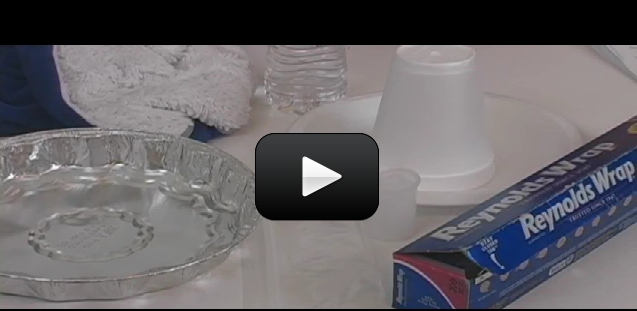Jupiter not only has the biggest lightning bolts we’ve ever detected, it also shocks its moons with a charge of 3 million amps every time they pass through certain hotspots. Some of these bolts are cause by the friction of fast-moving clouds. Today you get to make your own sparks and simulate Jupiter’s turbulent storms.
Electrons are too small for us to see with our eyes, but there are other ways to detect something’s going on. The proton has a positive charge, and the electron has a negative charge. Like charges repel and opposite charges attract.
Materials
- Foam plate
- Foam cup
- Wool cloth or sweater
- Plastic baggie
- Aluminum pie pan
- Aluminum foil
- Film canister or M&M container
- Nail (needs to be a little longer than the film canister)
- Hot glue gun or tape
- Water


Yes absolutely!
can I use a Styrofoam carryout containers instead of a plate? we have some unused ones.
If you aren’t seeing a spark, be sure that try this in a dark room. Also, it might be too humid.
Be sure you are using a real wool sweater or a plastic bag to build up the static charge. You might also try rubbing the plate for a longer amount of time.
If you still aren’t seeing a spark, please take some well lit, in focus pictures of your set up and email them to [email protected].
after I tried this a couple of times, I realized it didn’t work. What should I do?
Try logging out and then back in. Do you see the video now?
There is no video
Ok. Thank you Mrs. Aurora!
Yes, most of the time the objects have a mix of both. It’s when there’s a lot more of one than the other that the object will exhibit an overall charge.
Can you mix positive charges with negative charges? Or will the second cancel out the first? -Sasha, Missouri